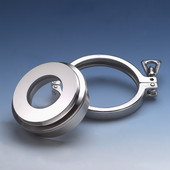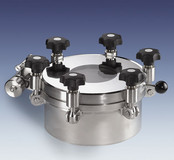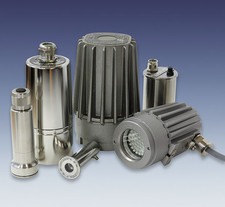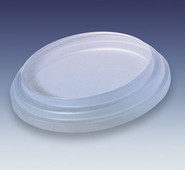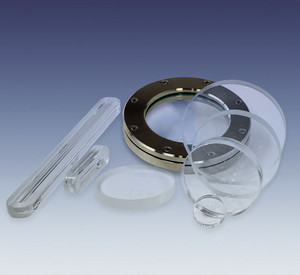Quarz glass
Metaglas®

Quartz glass is a single component glass (SiO2). It is one of the most important materials for science and industry. Synthetic quartz glass is produced from pure silicon tetrachloride (SiCl4) by the flame pyrolysis process. For fused quartz glass made from, natural crystalline raw materials, rock crystal or pegmatized quartz is used. This raw material is ground into a fine granulate and fused into quartz glass using a hydrogen-oxygen flame
Download
Characteristics
- Eood transmission behavior in the ultraviolet, visible and infrared wavelength range
- High temperature creep resistance
- Low coefficient of thermal expansion
- Good thermal shock resistance
- Excellent electrical insulation properties
- High chemical purity
- Maximum application temperature: 1100°C continuous, 1300°C short term
Application
- High temperature processes (temperature resistance)
- .
- Optic (good light transmission in the ultraviolet, visible and infrared wavelength ranges)
- .
- .
- .
General
| Thermal expansion |
α 20/300 = 5,1×10-7 K-1 |
|
Density |
2,2 g/cm³ |
|
Young’s modulus |
70000 N/mm² |
|
Poisson’s ratio m |
0,17 |
|
Pressure resistance |
1150 N/mm² |
|
Tensile strength |
50 N/mm² |
|
Bending strength |
67 N/mm² |
|
Thermal conductivity |
(20-100°C) 1,38-1,46 W m-1 K-1 |
log of the electric volume resistance in -cm
| at 20°C |
20 |
| at 100°C | 18 |
|
at 600°C |
12 |
|
at 1000°C |
8 |
|
Pressure resistance |
1150 N/mm² |
log of the electric volume resistance in -cm
| at 20°C |
20 |
| at 100°C | 18 |
|
at 600°C |
12 |
|
at 1000°C |
8 |
|
Pressure resistance |
1150 N/mm² |
Chemical resistance
|
Water resistance (DIN ISO 719) |
HGB 1 Hydrolytic class 1 |
|
Acid resistance (DIN 12116) |
Class 1 |
|
Alkali resistance (DIN ISO 695) |
Class 1 |




